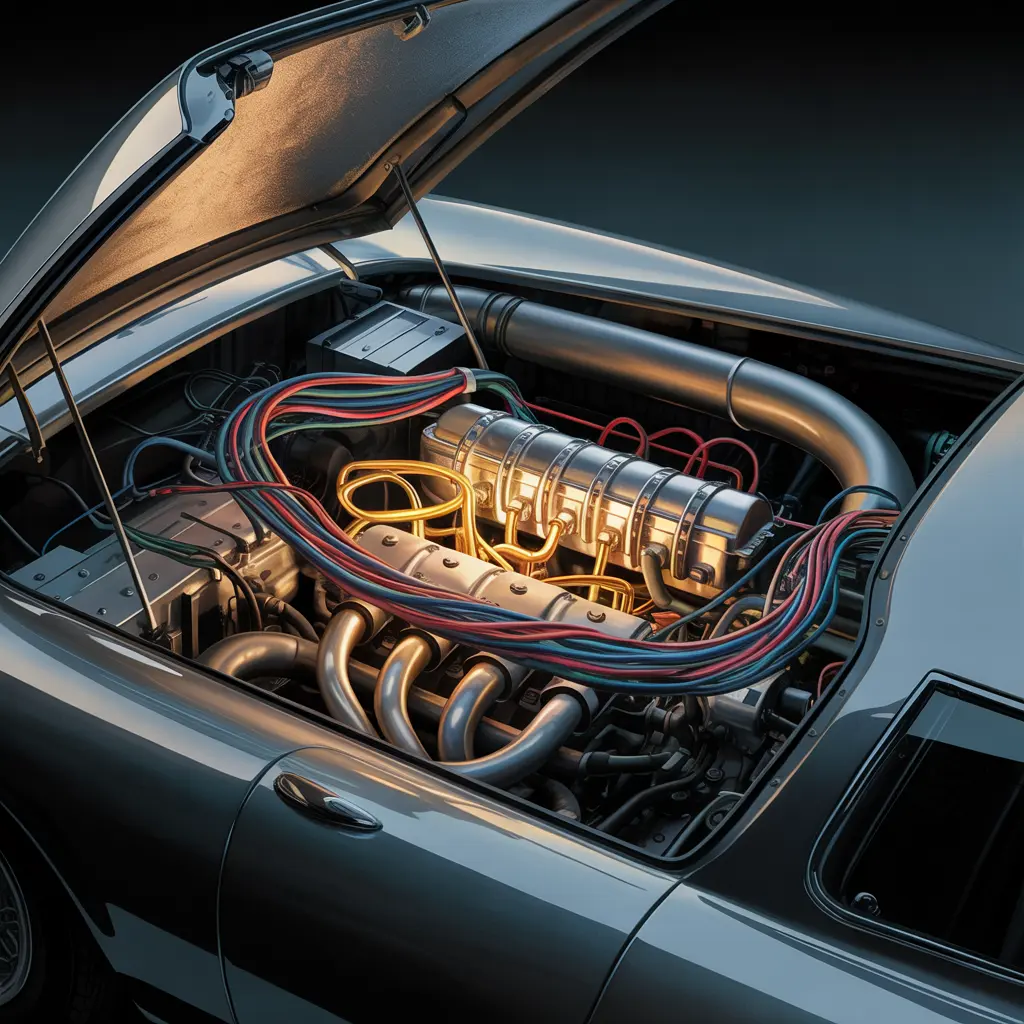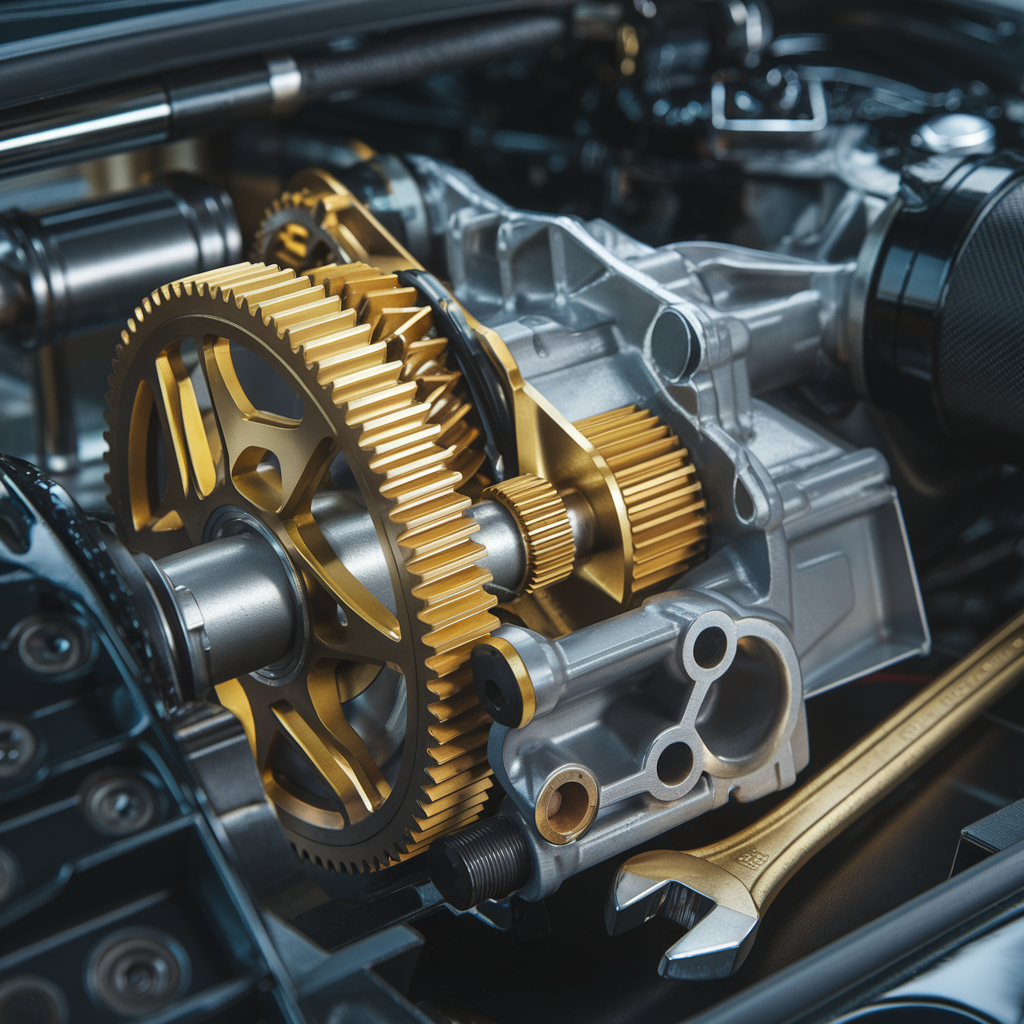Range Rover SUVs are designed for peak performance and luxury, often during off-road adventures. Such unique usage and performance require your car to always be cool and not give up on you in the middle of nowhere.
Things get even more complicated when Dubai’s intensely hot weather is added to the equation. Temperatures can exceed 40 degrees Celsius during summers, asking for regular car maintenance in Dubai’s harsh climate. To combat such heat and keep the engine operating temperature in the optimal range, the car’s cooling system has to work overtime.
However, even with its sophisticated engineering, Range Rover vehicles are still prone to failure and overheating. Once the engine overheats, it becomes really difficult and time-consuming to bring it back to the optimal temperature and get the car going again.
If handled improperly, you might damage your car severely, causing you to seek professional car engine repair in Dubai.
This is why you need to be alert and informed about your car’s overheating problem. You should be able to notice when your car starts to overheat and the reason behind it.
We will guide you through the most common signs and reasons for Range Rover overheating. You may want to read it before you set off on your next adventure.
7 Signs of Range Rover Overheating
Part of owning a luxury and high-performance car like a Range Rover is being aware of its issues and how to spot and fix them. With regard to overheating, here are a few signs that can alert you before a major failure halts your journey:
Rising Temperature Gauge
Every modern car has a temperature gauge on the dashboard to track the temperature of your car’s engine. More sophisticated cars like Range Rovers have warning lights for this purpose. Keep an eye on it.
As soon as you observe the gauge over the optimal range, you must stop your car and take preventive action.
Engine Misfiring or Stalling
Intense engine heat can affect the internal components, causing them to expand. This can affect combustion and disrupt timing, leading to engine misfiring and stalling. These are the signs that you should pull your car over and bring it back to normal temperature.
Steam from the Hood
One of the most common signs of overheating is the steam coming out of the hood of your car. This should be easy to spot, as your eyes are always on the road, and the steam will cloud your vision.
Stains Under the Car
Before starting your journey, check your car properly and look under the car as well. Any stain or puddles of bright green or orange fluid can mean a coolant leak, which should warn you of imminent overheating.
Tapping or Ticking Noises
The oil inside your car used to lubricate the engine is sensitive to temperature. Higher temperatures can make it less viscous, leading to improper lubrication and unusual tapping or ticking noises.
Reduced Engine Performance
Modern cars have a ”limp home mode,” activated as soon as there is a malfunction that can damage the engine or transmission. This reduces the engine’s performance and protects it. So, if your car’s engine is not performing at its peak, you need to check for signs of overheating that might have triggered the limp home mode.
Burning Smell
If you can’t see any signs or feel any disruptions, fall back on your sense of smell. An overheating engine will generate a pungent burning smell, which should be noticeable to the people sitting in front.
Now that you have noticed that there is an overheating problem, it’s time for you to determine the root cause.
7 Common Causes of Range Rover Overheating
Having knowledge about your car’s problems and where they originate from can give you the ability to find a suitable fix. It also gives you an upper hand during the repairs, as you can get the best deals.
Let’s explore some of the most common reasons Range Rovers might overheat.
Coolant System Leaks
If your car is overheating, then the first logical explanation for it is the lack of a cooling agent in your car. You can check the coolant level in the car, and if they are below the optimal level, then it might be a coolant leak causing the problem.
Failed Thermostat
Thermostats are responsible for determining the engine temperature and allowing the coolant in. However, any malfunction can lead to the shutting down of the thermostat, which means it does not allow the coolant to enter an overheating engine.
Radiator Problems
People lead busy lives and often fail to maintain important car components such as radiators. A damaged, clogged, or dirty radiator will not dissipate heat closer to its full potential, which can lead to engine overheating.
Water Pump Failure
Water pumps are responsible for pumping the coolant within the cooling system to efficiently perform the heat transfer and cool the engine down. Any electrical or mechanical failure on the pump can disrupt this process and cause the temperature to rise.
Cooling Fan Malfunction
Engines also have cooling fans in place to assist in the cooling process. However, if they fail to activate on time while you are stuck in traffic or cruising on a highway, the engine will overheat, leading to stalling and misfires.
Blocked or Dirty Coolant Passages
Old and used-up engine oil can deposit in the car and form clogs, which can affect the cooling efficiency of your car. This is why experts suggest frequent oil draining and refills to avoid overheating problems.
Low Engine Oil
If everything else is fine and you have enough coolant in the tank, the next thing you need to suspect is the level of oil inside the engine. Low engine oil can cause more friction, leading to overheating.
How to Prevent Overheating in Your Range Rover
Overheating is not an issue that you should get intimidated by. You can take several steps to keep your Range Rover from overheating.
- Regular Coolant Checks: Make it a habit to check coolant levels monthly, especially during the summer. Top off with the correct coolant mix if needed.
- Inspect for Leaks: Check under your vehicle and around the engine bay for signs of leaks or corrosion.
- Flush the Cooling System: Coolant degrades and loses effectiveness over time. A coolant flush every 2 years or as recommended in your Range Rover’s manual can help prevent buildup and blockage.
- Keep the Radiator Clean: Dust and debris can clog the radiator fins. A professional cleaning or inspection can ensure it’s operating efficiently.
- Replace the Thermostat & Water Pump on Schedule: These components wear out over time. Replacing them as part of scheduled maintenance reduces the risk of sudden failure.
- Use the Right Oil: Always use engine oil that meets the manufacturer’s specifications for your vehicle and the climate you’re driving in.
Summary
Range Rovers have unique performance needs and require constant attention to avoid issues such as overheating. The best you can do is to be aware of signs of overheating and stop your car, allowing it to cool down while you go through possible causes of the problem.
Your car is your biggest asset, and you must know its needs and problems to find precise solutions.
Desire Auto Service – Perfect Spot for Range Rover Repairs in Dubai
Ran into Range Rover trouble? Don’t worry. Desire Auto Service is the leading car garage in Dubai specializing in Range Rover repairs. We will locate the source of the damage and provide instant repairs to get you going again.
Book an appointment today and get a detailed quote and repair plan for your precious Range Rover.



